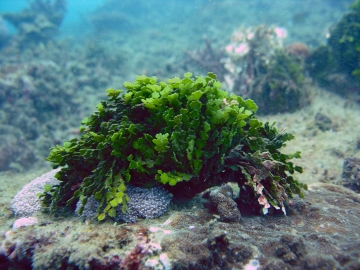680723_Green Doughnuts_360 px width.jpg

Large beds of green algae known as Halimeda serve as an important habitat and store carbon which contributes to the health of Earth's environment. Credit: Vardhan Patankar, CC BY-SA 4.0.
Green doughnuts are typically something you want to avoid. But some giant green doughnuts on Australia’s Great Barrier Reef may actually be good for us. They may store carbon on the ocean floor. That keeps it out of the atmosphere, where it would add to climate change.
The “doughnuts” are created by a type of green algae, known as Halimeda. Each one forms a flat or crinkled disk that can range from less than an inch to several feet across. Combined, they form circular beds that can cover many acres—beds that look like green doughnuts.
The largest beds are found on the Great Barrier Reef. They’re on the outside of the reef, where a lot of nutrient-rich water flows up from the ocean. In fact, they may cover as much area as the reef’s famous corals.
The beds are important for a couple of reasons. For one thing, like the coral reefs, they provide habitat for a lot of other life. And for another, they lock up carbon that might otherwise be in the atmosphere.
That’s because Halimeda has a hard skeleton. The skeletons contain calcium carbonate, a carbon-rich compound. When the algae die, the skeletons form fossil beds that hold the carbon. Over thousands of years, that builds up huge beds—keeping a lot of carbon out of the air.
A recent research cruise drilled as deep as 20 feet into the beds on the Great Barrier Reef. Those results will tell us more about these “green doughnuts”—and their possible contribution to the health of Earth’s environment.

